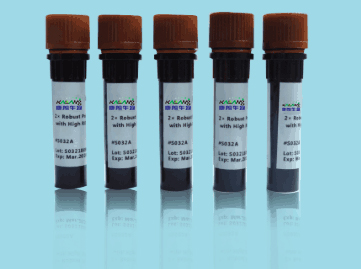

客服电话:021-61998208
Anti Her2 mouse monoclonal antibody
Anti Her2 mouse monoclonal antibody
应用:IHC:1:100~200
产品名(Product Name)
Anti Her2 mouse monoclonal antibody
货号(Catalog No.)
KL-10013Mo
种类(Category)
Primary antibody
宿主(Host)
Mouse
反应种属(Species specificity)
Homo sapiens,other species was not test
应用实验(Tested applications)
IHC
克隆性(Clonality)
Monoclonal
克隆编号(Clone No.)
82-A-5
偶连物(Conjugation)
Unconjugate
免疫原(Immunogen)
Recombinant protein of full length human ErbB 2
别名
Receptor tyrosine-protein kinase erbB-2;ERBB2;Metastatic lymph node gene 19 protein;Proto-oncogene Neu; CD340;HER2, MLN19, NEU, NGL
Uniprot ID
P04626
状态(Form)
Liquid
储存溶液(Buffer)
PBS, pH7.4, containing 0.05% proclin300, 50% glycerol.
存放条件(Storage)
Use a manual defrost freezer and avoid repeated freeze thaw cycles.
Store at 4 °C for frequent use.
Store at -20 to -80 °C for twelve months from the date of receipt.
浓度(Concentration)
1mg/ml
亚型(Isotype)
IgG1
分子量(MW)
138 kDa
纯化方式(Purity)
Protein G purified from mice ascites
产品背景:Receptor tyrosine-protein kinase erbB-2, also known as CD340 (cluster of differentiation 340), proto-oncogene Neu, Erbb2 (rodent), or ERBB2 (human), is a protein that in humans is encoded by the ERBB2 gene. ERBB is abbreviated from erythroblastic oncogene B, a gene isolated from avian genome. It is also frequently called HER2 (from human epidermal growth factor receptor 2) or HER2/neu.
HER2 is a member of the human epidermal growth factor receptor (HER/EGFR/ERBB) family. Amplification or over-expression of this oncogene has been shown to play an important role in the development and progression of certain aggressive types of breast cancer. In recent years the protein has become an important biomarker and target of therapy for approximately 30% of breast cancer patients.Protein tyrosine kinase that is part of several cell surface receptor complexes, but that apparently needs a coreceptor for ligand binding. Essential component of a neuregulin-receptor complex, although neuregulins do not interact with it alone. GP30 is a potential ligand for this receptor. Regulates outgrowth and stabilization of peripheral microtubules (MTs). Upon ERBB2 activation, the MEMO1-RHOA-DIAPH1 signaling pathway elicits the phosphorylation and thus the inhibition of GSK3B at cell membrane. This prevents the phosphorylation of APC and CLASP2, allowing its association with the cell membrane. In turn, membrane-bound APC allows the localization of MACF1 to the cell membrane, which is required for microtubule capture and stabilization.
特别提示:本公司的所有产品仅可用于科研实验,严禁用于临床医疗及其他非科研用途!







